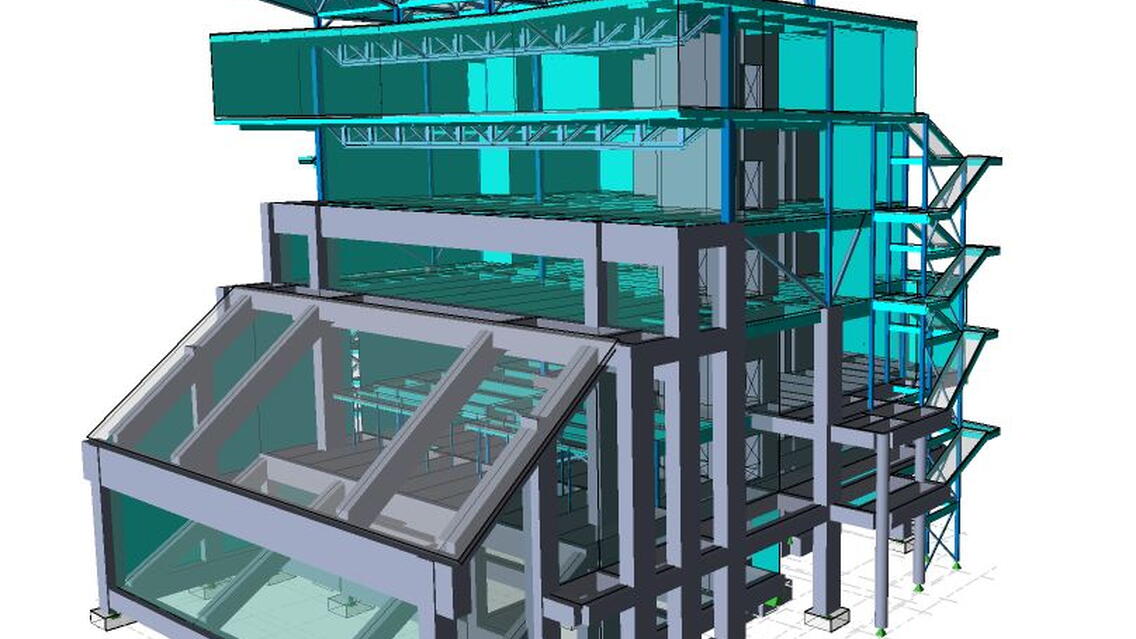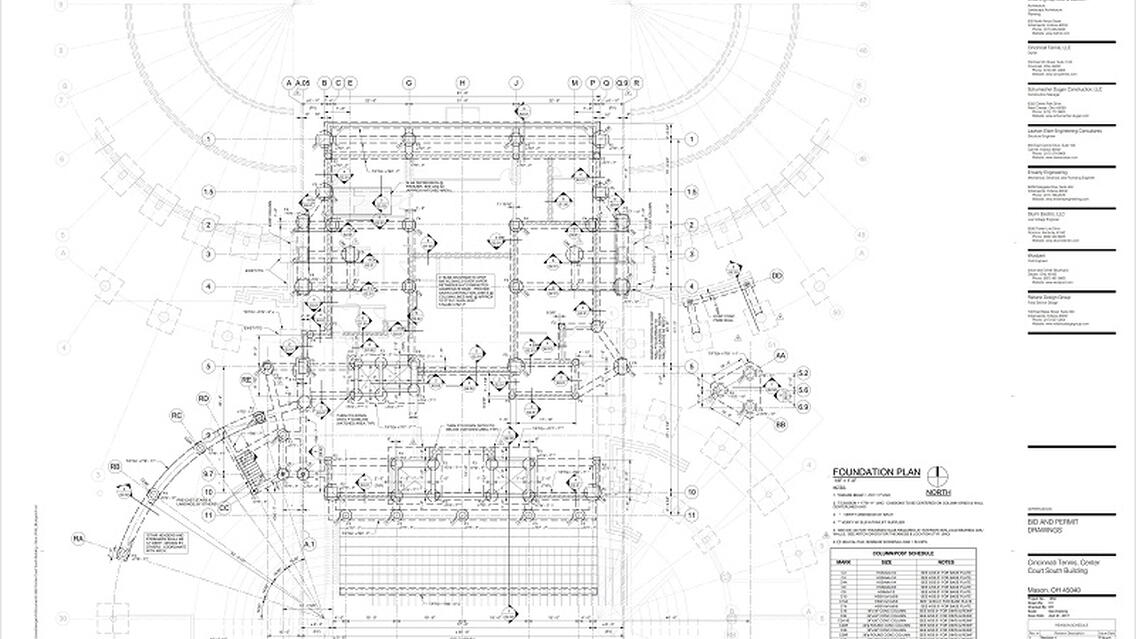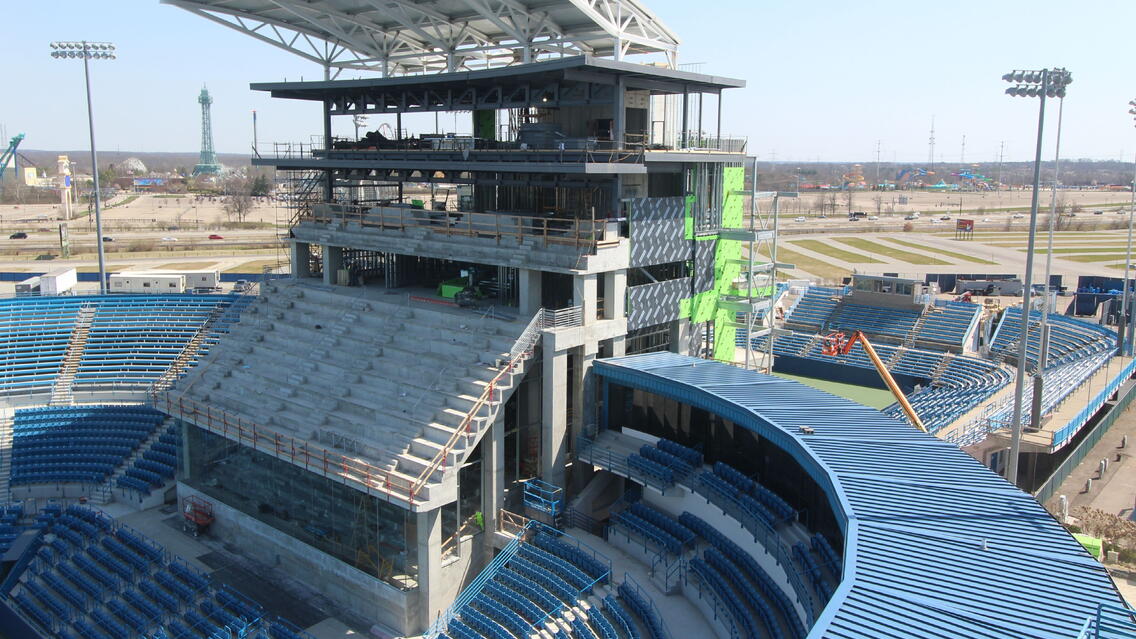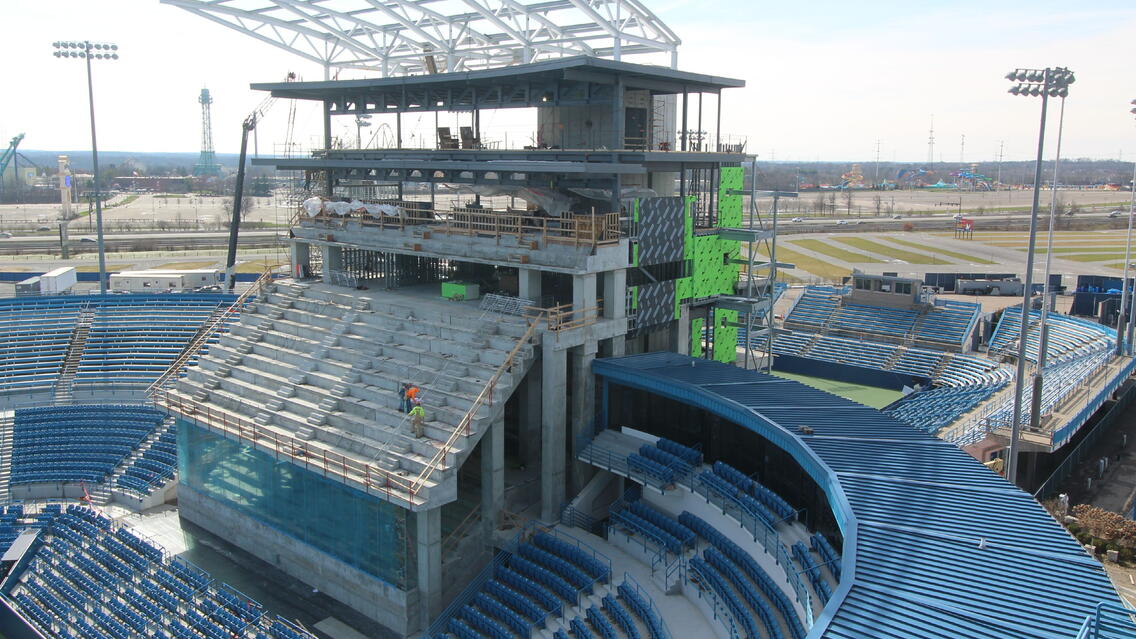Located at The Lindner Family Tennis Center in Mason, Ohio, the new 40,000 square foot South Building stands 104 feet tall. BDMD Architects planned and designed the building and LEI provided structural engineering services on the project. This tennis center is the home to the Western & Southern Open, the second largest summer tennis event in the U.S. after the US Open. Roger Federer is a seven-time Western & Southern Open winner while the current world number one, Rafael Nadal won the open in 2013.
The previous south stand at the center court was demolished to make way for the new South Building which is a five-story structure that will feature a restaurant and a bar with 252 air-conditioned box seats behind glass panels, presumed to be the first in professional tennis. The next floor will have 396 new outdoor box seats and the fourth floor will have all-inclusive suites accompanied by 126 outdoor seats. The fifth story includes the press box and broadcast booths. The building is located between the Center Court and the Grand Stand which will allow for different viewing levels on both courts.
The multi-material building stands atop 70 drilled shaft foundations that are 30 feet deep in the soil. The building rises from the ground on 22 cast in place concrete columns. The precast seating facing the center court is supported by 4 cast in place concrete raker beams. To handle the gravity load from the seating, these raker beams were supported by pre-stressed concrete beams at the top and bottom. These pre-stressed beams span 95 feet providing an unobstructed view for the 252 air-conditioned box seats below. The building has slabs on a metal deck typically on every floor supported by a beam girder system. Levels four and five are supported by steel structures. The building has two steel trusses that span 95 feet, giving a clear floor span on the fourth and fifth floors. The canopy on the building comprises 5 steel trusses that cantilever over the box seats by 30 feet and gives the building its height of 104 feet above ground. The building is primarily supported against lateral wind and seismic loads by three concrete elevator shafts.




